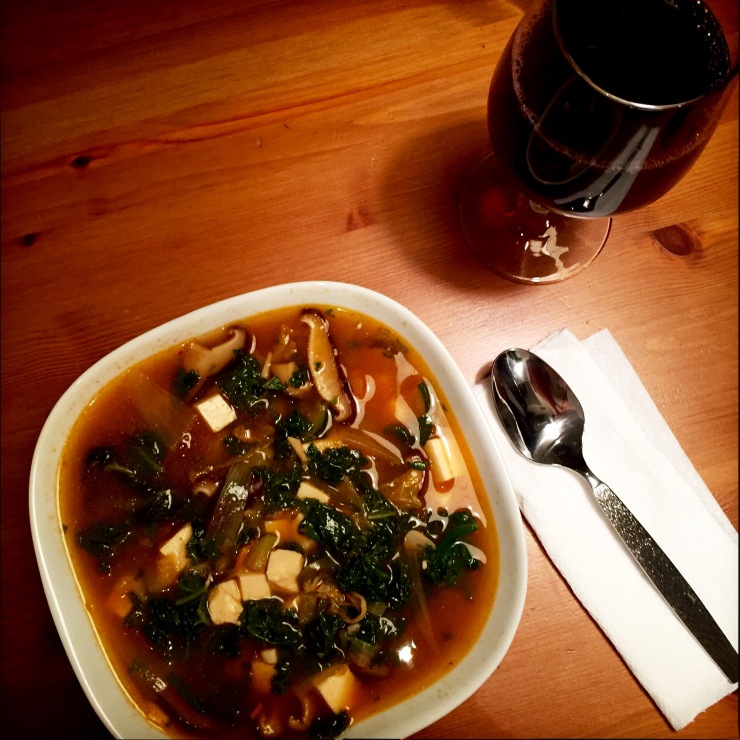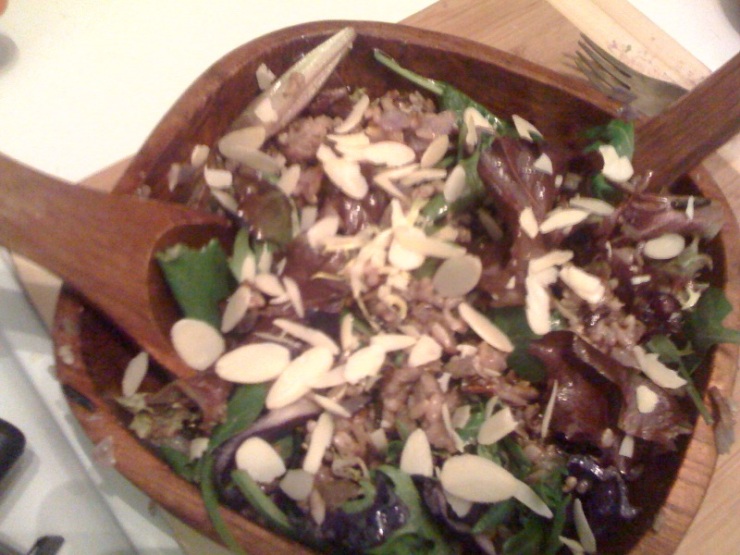Why should big, bold, beautiful flavors be complicated? The answer is — they don’t have to be. In this simple soup recipe, inspired by sundubu jjigae, a traditional spicy Korean soup made with tofu and kimchi, a few authentic ingredients do the heavy lifting.

The key to this recipe, which comes together quickly, is to prep all vegetables in advance of cooking. Additionally, homemade stock adds complexity and deliciousness. Choice of add-ins means that this soup can be vegetarian — or not. We used leftover braised leg of lamb and it was absolutely delicious.
Spicy Korean Soup (aka Sundubu)
Serves 4
4 garlic cloves, thinly sliced
1 Serrano chili pepper, minced
1 medium onion, sliced
4 oz. shiitake mushrooms, sliced
1 medium zucchini, chopped
1 T anchovy paste
6 c. homemade stock (chicken, pork or veg.)
2 T Korean hot pepper paste (also known as kochujang or gochujang)
8 oz kale, chiffonaded
Salt and pepper to taste (alternatively, soy sauce and pepper)
Suggested add-ins:
Soft or silken tofu, cubed
Kimchee (to taste)
Shredded chicken, pork, or leftover braised leg of lamb — at room temp
Glass noodles (also known as cellophane noodles or bean thread noodles)
Optional toppings:
Thinly sliced Serrano peppers
Sliced scallions
Toasted sesame seeds
Red pepper flakes
Directions: Sauté garlic, serrano pepper and onion in 1-2 tablespoons of oil over medium heat in a heavy-bottomed stock pot for 2-3 minutes, until fragrant; add anchovy paste and stir until combined. Add mushrooms and zucchini and cook until beginning to soften, approx. 5-7 minutes. Add stock, cover and and bring soup to a simmer; stir in Korean hot pepper paste until combined and add kale. Cover and simmer until kale is wilted, approx. 5 minutes. Salt and pepper to taste.
Meanwhile, prep soup bowls with add-ins of choice. Once soup is ready, ladle soup into bowls and add toppings (optional). Enjoy!



